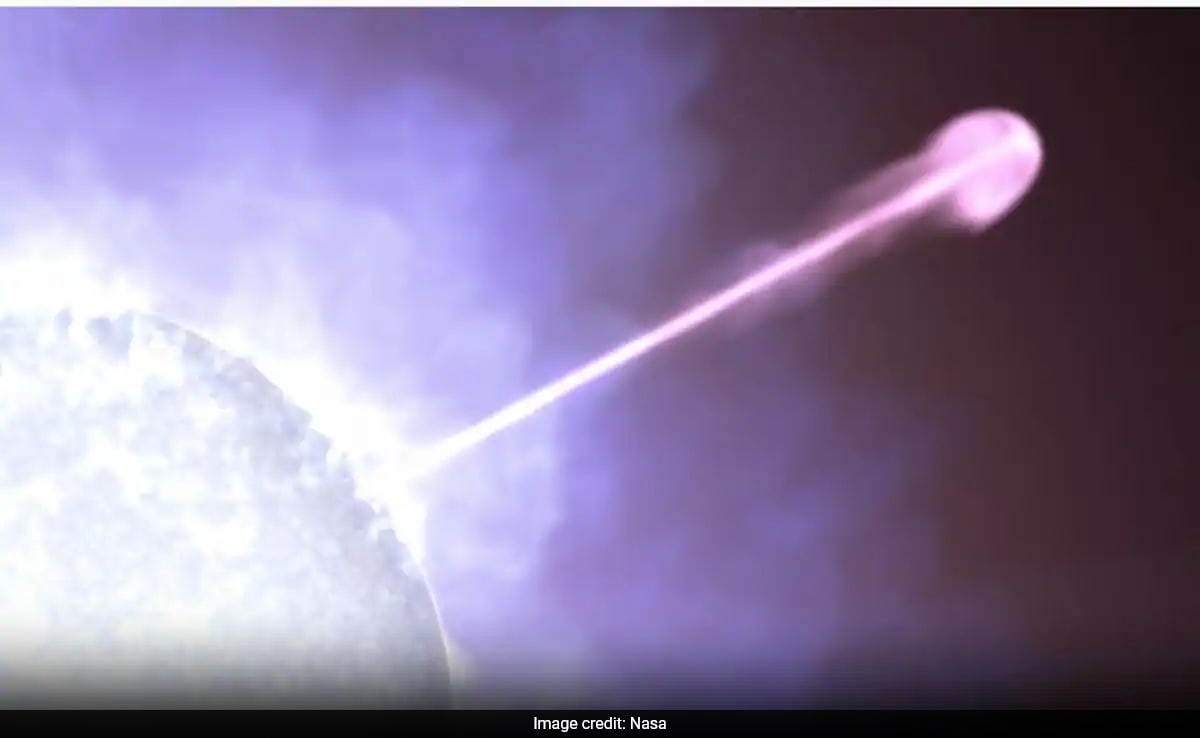
Scientists found that this burst toasted one side of the Earth’s Ozone layer. (Representative pic)
In a mind-boggling discovery, scientists have found that a supernova explosion billions of light years away was so powerful that it “temporarily destroyed” some of the Earth’s ozone layer in 2022. According to the New York Times (NYT), on October 9 last year, the telescope captured a jet of high energy photons which were moving towards Earth. This was the evidence of the explosion of a supernova which was 1.9 billion light years away. Such events are known as gamma-ray bursts (GRB), but astronomers who have continued studying this gigantic explosion said it was the “brightest of all time (BOAT)”.
Now, in the latest discovery, scientists found that this burst, which lasted nearly 7 minutes, toasted one side of the Earth’s Ozone layer. According to NYT, it caused a measurable change in the number of ionized particles found in Earth’s upper atmosphere, including ozone molecules, which readily absorb harmful solar radiation.
“It was such a massive event, it affected all levels of the atmosphere,” said solar physicist Laura Hayes of the European Space Agency (ESA), as per Science.org.
“The ozone was partially depleted – was destroyed temporarily,” said Pietro Ubertini, who is an astronomer at the National Institute of Astrophysics in Rome, which worked towards the discovery of the atmospheric event.
According to NYT, the effect of the gigantic explosion was seen for some minutes before the ozone layer quickly repaired itself, so it was “nothing serious,” said Mr Ubertini. However, the scientist added that if a supernova occurred closer to us, then “it would be a catastrophe”.
Therefore, the latest findings highlight the faint but real risk of closer bursts destroying our planet’s protective ozone layer. The discovery demonstrates how even explosions that occur far from our solar system can influence the atmosphere, which can be used as a giant detector for extreme cosmic phenomena, scientists explained.
Also Read | Fossils Of Dinosaurs That Died 190 Million Years Ago Found In China Alongside 50 “Leathery” Eggs
Previously, simulations have shown that a gamma-ray burst in the Milky Way galaxy could wipe out the stratospheric ozone layer for years, long enough to cause widespread extinction. However, according to the outlet, this is the first time scientists proved that the entire ionosphere can be affected by such cosmic explosions.
Ms Hayes stated that it is uncommon for faraway cosmic phenomena to create such massive atmospheric disturbances. “Fortunately for us, this gamma-ray burst was extremely distant, making its effects more of a scientific curiosity than a threat,” she said, as per the outlet. Separately, Mr Ubertini said that if the gamma-ray burst is a million times larger, it can ionise enough ozone, weakening the protective barrier for days or months.
However, astronomers believe that the October 2022 event, known as GRB 221009A, was a one-in-10,000-year event, so a closer one would be even rarer.




